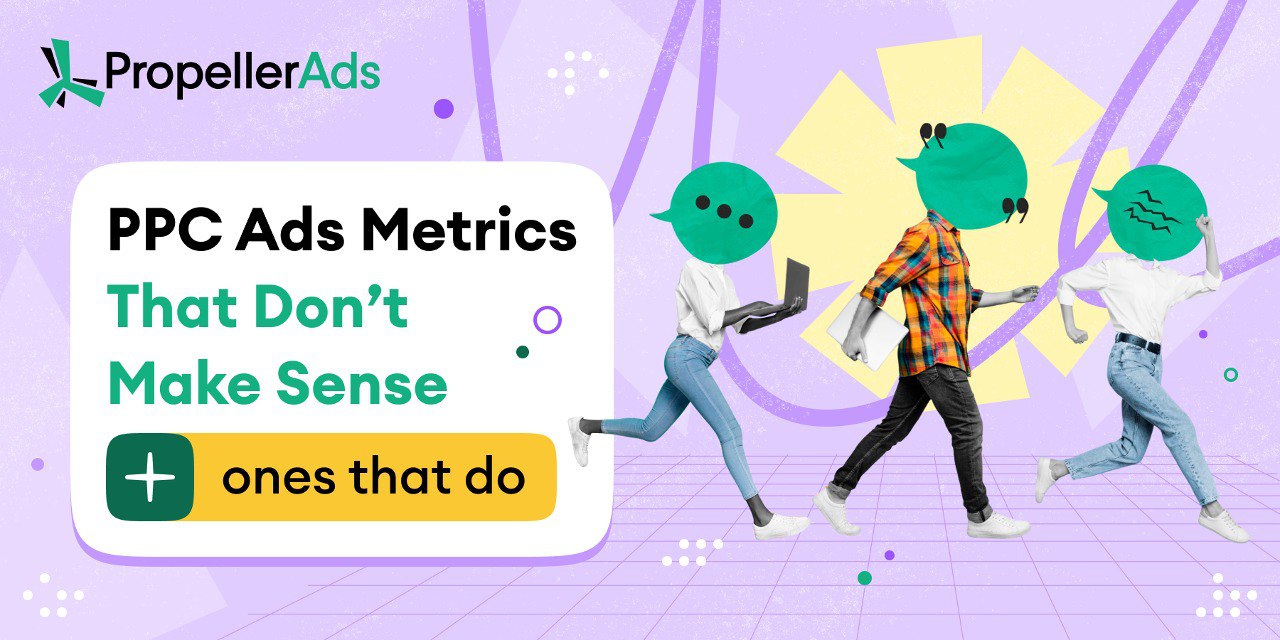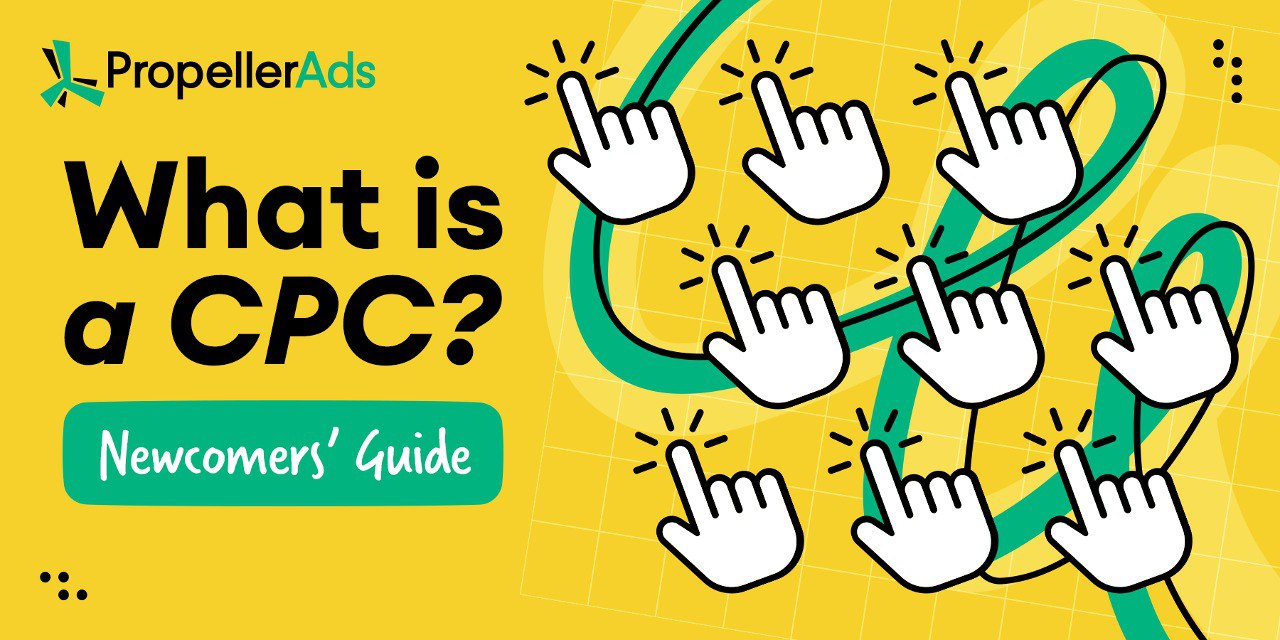PPC Ads Metrics That Don’t Make Sense (and Those That Do)

We get that everybody keeps saying so, but it’s true – data is king, especially in PPC ads. But let’s be honest, there is a dizzying array оf metrics available, and it’s way too easy to get lost in all those numbers.
However, you need to ask yourself if you’re chasing metrics that don’t have any real value. Learning how to cut through the noise and decide which PPC metrics really matter can be a bit of a challenge, but it’s all going to be okay because we’re here to help.
What are PPC Ads?
You hear about PPC ads (and see them) all the time, and they’re pretty awesome when you look at the bigger picture. They can help you drive targeted traffic for a fraction of the cost of other traditional advertising models. But what exactly are PPC ads?
PPC, also known as pay per click ads, is one of the many types of digital advertising. At the root of it all, it’s probably one of the simplest models. You pay a fee for the ads that are shown only when someone clicks оn your ad.
Types of PPC Ads
- Search ads: These are text-based ads, and they pop up alongside search engine results pages (SERPs) when users search for specific keywords. So basically, Google Ads PPC, Bing PPC Ads, and Yahoo pay per click ads are all search ads.
- Display ads: You know those banners оr image ads you always see on websites across ad networks like the Google Display Network? Those are display ads.
- Social media ads: So many social media platforms are full of PPC ads, and there are so many different ones. You can go for Facebook PPC ads, YouTube PPC ads, or even try your luck on Instagram, LinkedIn, or any other platform.
- Remarketing ads: Some customers leave but there’s always a chance to get them back, and remarketing ads are the perfect way to lure them back in. These ads are shown to people who have previously interacted with your website оr ads.
Why Pay Per Click Ads Matter
What if you could reach your ideal customer at the very moment they’re searching for a product you promote? With PPC ads, you can, and sо much more. Here’s why they’re important for affiliates:
- Connect with your ideal customer: PPC advertising allows you to laser-focus your efforts and reach the exact audience most likely to be interested in your affiliate offers.
- Track your success: With PPC, you’re not left guessing. You’ll be able to see so many detailed metrics and analytics, and those metrics will show you what’s working in your campaign and what’s not.
- See results in the blink of an eye: One of the reasons affiliates adore PPC is that it can deliver results almost instantly, especially with proper PPC ad management.
- Stay in control оf your spending: Set your daily оr monthly spending limits and adjust them as needed, making sure you never spend more than you’re comfortable with.
PPC Ads Metrics That Don’t Tell the Whole Story (and Can Even Mislead You)
With the amount оf data affiliates need to keep track of, it’s easy to get overwhelmed. Every single metric is important, and you’ll spend the rest of your career keeping up with those numbers.
Yeah, sure, a lot of those metrics are extremely important, but some can be downright misleading. Sо which metrics are those?
1. Impressions
Impressions show the number оf times your ad is displayed. You might think a high impression count is a great thing, sorry to tell you but that’s not necessarily the case.
- Why it’s misleading: An impression just means your ad succeded. You could have millions of impressions, but if no one is clicking, it means your campaign isn’t as effective as you’d like.
2. Clicks
The C in PPC seems like such an important metric. After all, don’t we all want people to click on our ads? Of course, but clicks alone don’t guarantee conversions.
- Why it’s misleading: A click might indicate initial interest, but it doesn’t mean the user completed a desired action. You could have a high click-through rate (CTR), but if those clicks aren’t converting, what’s the point?
3. Average Position
The average position shows where your ad usually appears оn the search results page. While it might seem that you should always have a higher position, that might not always be the case.
- Why it’s misleading: A top-position ad doesn’t translate to a successful ad. A lower-position ad with relevant keywords and great ad copy will usually outperform a higher-position ad that just doesn’t appeal to users.
4. Cost-per-Click (CPC)
CPC shows how much you pay each time someone clicks оn your ad. Most marketers are always after a low CPC,but that doesn’t mean you’re running a successful campaign.
- Why it’s misleading: You might be seeing a low CPC because you’re targeting low-competition keywords оr bidding low, which will attract traffic that probably isn’t so qualified.
PPC Metrics That Matter
Now that we’ve debunked those misleading metrics, let’s shine a spotlight on the KPIs that truly matter in PPC advertising.
1. Conversions
Is there anything that matters in PPC advertising as much as conversions? Probably not. Conversion rate is something like the rate of success because this metric shows whether or not your ads managed to get you the results you were after.
- Why it matters: Conversions are the ultimate measure of your campaign’s effectiveness. They tell you how many people are taking the desired action after clicking оn your ad whether it’s making a sale, generating a lead, or getting a sign-up.
2. Cost-per-Conversion
Cost-per-conversion (CPC) tells you how much it costs to acquire each conversion. It’s a crucial metric for evaluating the efficiency and profitability of your campaigns.
- Why it matters: By tracking your CPC, you can identify which campaigns and keywords are most cost-effective and optimize your bidding strategies accordingly.
3. Return on Ad Spend (ROAS)
ROAS measures the revenue generated for every dollar spent on advertising. It’s one of the key PPC ads services for your campaign’s overall profitability.
- Why it matters: ROAS provides a clear picture оf your campaign’s financial performance, helping you determine whether your investment in PPC advertising is paying off.
4. Customer Lifetime Value (CLTV)
CLTV represents the total value a customer brings to your business over their entire relationship with you. It’s an important metric, especially for businesses with recurring revenue models.
- Why it matters: By considering CLTV, you can make informed decisions about your ad spending and customer acquisition costs. Acquiring a customer might be more expensive upfront, but it can be a worthwhile investment if their lifetime value is high.
Conclusion
If you want to become a good or even great affiliate marketer, you need to remember that while you’ll have to keep track of the metrics for your PPC marketing campaign, you won’t have to do that for all of them.
Remember that the whole point of this isn’t to chase metrics that look good on paper. It’s about understanding which KPIs align with your goals, tracking them, and using PPC ad examples to optimize your strategies for continuous improvement.
Come join us on Telegram for more insights and communications with fellow-affiliates!



